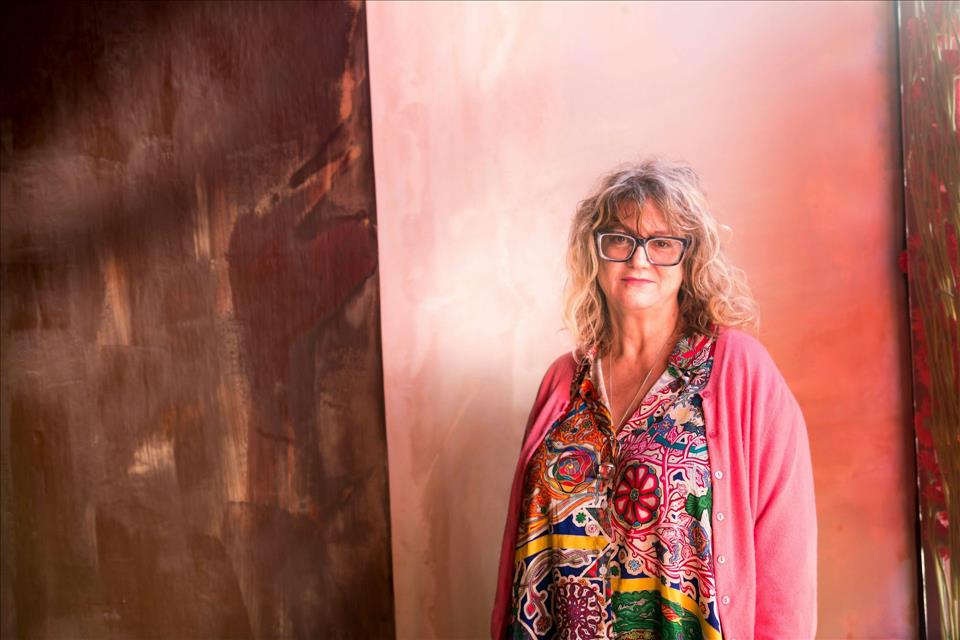
Anya Gallaccio: From Chocolate Walls To Wilting Flowers The Art Of Decline, Decay And Transformation
Famous for her sculptural explorations of decay, Gallaccio has created Stroke , a multi-sensory experience of chocolate, using the vacant shop as a comment on the post-industrial hollowing out of a town with a proud manufacturing past. It stands as an example of how art can positively transform disused spaces into places of immersive exploration that stimulate discussion about the past and the future.
From the mid 18th century, Paisley was at the centre of textile innovation . The cotton spinning, weaving and trading that shaped its communities brought skills, wealth and civic pride for more than 200 years. Wandering through the town's centre today, it is hard to believe it was once a global centre for textile production.
Looking for something good? Cut through the noise with a carefully curated selection of the latest releases, live events and exhibitions, straight to your inbox every fortnight, on Fridays. Sign up here .
With end of the second world war, Paisley entered an era of gradual decline. The famous mills closed and relocated to countries with cheaper workforces. Unemployment soared because so many families in the town had relied on the textile industry and the mills for work. Today, parts of Paisley suffer some of the highest levels of deprivation in Scotland.
Many businesses are closed down and buildings neglected. Gallaccio's chocolate-painted walls bring one empty shop to life again through touch, smell and taste. By the end of December, the shop will transform into a café where the chocolate will be served in mugs instead of covering its walls.
Gallacio's Stroke art project has been seen around the world from Tokyo to London, where the amount of brushed chocolate layering has varied, as have audience responses, from licking and smelling, to carving their initials to leave a trace. In every city and town, Gallaccio has responded to each place and its history, as she has in Paisley.
Stroke by Anya Gallacio. Jupiter+ / Future Paisley
Across the high street in an old shopping arcade is the Jupiter Artland education studio . It's a new initiative from Jupiter Artland, a unique sculpture park on the outskirts of Edinburgh that puts outreach and education at the centre of its mission.
Through its art learning programme, Jupiter+, the organisation seeks to bring world-class contemporary artists like Gallaccio to local high streets where youngsters can explore their work. Through art engagement and coaching, thousands of young people have had the chance to explore creative expression and artistic agency.
Many are experiencing contemporary art for the first time, while others relish the chance to experiment with materials, block prints and collage-making techniques. This hands-on creative platform offers a space that sparks conversations about how local communities can be changed and transformed.
Preserve and decayThis is an important and creative time for Gallacio, who is professor emerita of visual arts at the University of California in San Diego. A major retrospective of her work, Preserve, recently opened at the Turner Contemporary in Margate. It is 21 years since Gallaccio was nominated for the Turner Prize, and her Stroke project has been timed to coincide with revisiting her Paisley origins.
The Margate exhibition restages several of Gallacio's sculptures. It represents three decades of work while showcasing new pieces too. One is a heavy curtain of real red apples titled Falling from Grace that bisects one of the Turner's galleries. It's a large-scale installation rooted in the local Kent landscape and the natural traditions of its apple-growing heritage.
This article is part of our State of the Arts series. These articles tackle the challenges of the arts and heritage industry – and celebrate the wins, too.
Elsewhere, a row of seven rugs woven with red gerbera flowers hangs on a wall decaying slowly over time, literally withering into the past. A comment on the fragility of eco-systems and life on earth, it examines the relationship between environment and art and raises questions over sustainability and environmental justice, as well the crucial human role in it.
Gallacio's use of organic materials – whether apples, flowers, trees, clay or chocolate – reveals her artistic interest in cycles of degeneration and transformation. Chocolate oxidises with time and goes off. Apples rot and eventually decompose into dust. The cloying scent of a decaying flower alters the viewer's response from allure to distaste.
A detail from the softly decaying gerberas in Beauty. Anya Gallaccio
The transient nature of Gallaccio's chosen materials also means that few of her works remain – itself a neat reflection on the climate crisis and our own mortality.
Soon a group of high-school pupils from Paisley will visit the Margate exhibition with Jupiter+ to explore more of Gallaccio's sculptural decay artworks. Deliberately provocative, her work relates to specific places and their heritage, sparking debate about what comes after decline and degeneration. And in that there is hope.

Legal Disclaimer:
MENAFN provides the information “as is” without warranty of any kind. We do not accept any responsibility or liability for the accuracy, content, images, videos, licenses, completeness, legality, or reliability of the information contained in this article. If you have any complaints or copyright issues related to this article, kindly contact the provider above.






















Comments
No comment